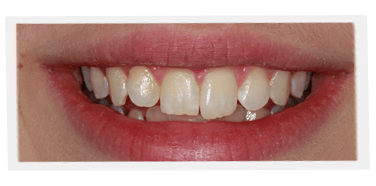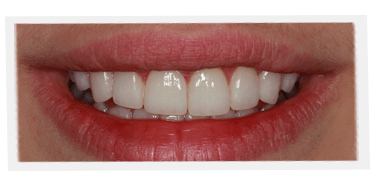
Below is a piece from my book, A Guide to the Perfect Smile, where we discuss the subjectivity and opinions people give surrounding cosmetic dentistry, such as veneers, and how a dentist’s role is to not only create that Hollywood Smile, but to show you which smile is the perfect one for you. Enjoy.
“The Big Picture”
Dentistry and the Aesthetic Principles of Nature
Our appreciation of human beauty, in contrast to our appreciation of art, has not changed significantly since ancient times. Good thing, too, because otherwise the paparazzi would be jostling each other for shots of people who looked as if they had walked out of a painting in the Museum of Modern Art. Happily, they chase after Julia Roberts, Angelina Jolie, and Charlize Theron, instead – goddesses who light up our screens and our lives with their dazzling smiles.
Aesthetics and the laws of Nature
I cannot believe how often dentists- and I have been guilty of this, too – miss the big picture. We are tempted to focus on the teeth and the mechanics of how to fix them, failing to see that the teeth have a direct bearing on the beauty of the people’s smiles through their relationship to the dynamics of the face.
I find this lack of broader vision frustrating. People who study architecture are excited by the adventurous designs of new buildings. Experienced gardeners glow when they walk past a well—landscaped lawn. Aficionados of opera rise to their feet for the best-sung arias. But virtually all of us on this planet, whatever our background or education, know human beauty when we see it. Our aesthetic judgment is blazingly fast, accurate, and final. So why don’t we dentists understand that our job is to use our art and discipline to help people find their perfect smile, in this way adding to personal and public enjoyment? Why can’t we see that our role is to help patients understand the fundamental geometric laws of aesthetic as they apply to their teeth, smiles, and faces? The truth is, we dentists do see our jobs this way and we do want to help is this way, but dental school didn’t teach us how.
Dentists traditionally regard aesthetic as an artistic, not a dental, concept. But we are coming to a new understanding. We must realize that there are principles behind aesthetics that can be quantified scientifically and therefore come into play in cosmetic and aesthetic dentistry. Dental aesthetics are governed by mathematical parameters. These parameters, or geometric laws, should not be viewed as immutable but as useful guidelines. When the parameters are properly applied by clinicians and laboratory technicians, restorations of unique aesthetic value may be achieved. The job of dentists, therefor, is twofold. First, we must ensure that the teeth, as they are related to the face, are properly proportioned and conform to the laws of nature. Second, we must take the next, practical step of quantifying and qualifying what the eye sees as being pleasing smiles.
What makes s smile beautiful is not purely subjective. Ask people to vote on the quality of various smiles and you will not get wildly varying responses. In fact, it turns out that in our responses to beauty, we are real-life proof of the accuracy of the ancient Greek’s aesthetic theories. They believed that art mirrors qualities that are mathematically built right into nature. Our enjoyment of proportion and grace, therefor, appears to be innate to the way things are. Some things we find pleasing and other things not. Out reactions are not accidental but are anchored in nature itself and the artistic sense that is related to the “nature of nature.”
Patients themselves may have subjective opinions about what they want, but it is the dentist’s job to show them, based on aesthetic and physical principles, that there is something objective to be sought. The perfect smile is the perfect smile for them, given not only what they want, or even think they want, but also what they should want.”



